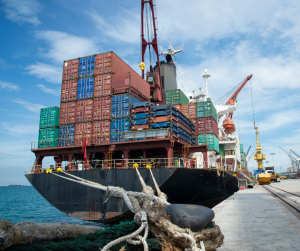
We remain cautiously optimistic. Keep in mind, the industry overall still is not back to its pre-pandemic rhythm. Continue to be strategic when planning shipping in your supply chains, and stay close to your Cargo Services professional team for guidance and advice.
Keep flexibility in your supply chain. While the industry is trending in the right direction, we are still experiencing delays at ports and rail yards. It’s still possible that two shipments scheduled to travel on the same vessel and route arrive weeks apart.
Return to shipment diversification strategies. Over the last two years, space was king. If space was offered, we recommended you book it. As the U.S. economy cools, consumer demand for goods dropped 20% in September and October. In turn, space is now available, so it’s time to become supply chain strategic once again. Choose difference alliances for shipments. This strategy supports the guidance above that no two shipments are the same. As demand for full containers drops, the congestion surrounding LCL (less than container loads) goes up. Warehouses are all struggling to get containers desegregated and unloaded in a timely fashion. Workplace staffing challenges remain and are causing heavy delays, cost(s) and congestion.
Keep an eye on union contracts to be ratified. Six of the 12 railroad unions that represent 115,000 workers nationwide have approved their tentative agreements with the railroads so far, but all of them have to ratify their contracts to avoid a strike. The unions have agreed to put any strike on hold until at least mid-November.
Labor negotiations have been ongoing between the International Longshore and Warehouse Union (ILWU), which represents more than 22,000 West Coast port workers, and the Pacific Maritime Association (PMA), which represents port terminals and ocean carriers, since May. The previous agreement between the two sides expired on July 1, 2022, but operations have continued during ongoing negotiations.
Look beyond U.S. borders. While we’re seeing supply chain improvements from Asia to the U.S. European business remains challenging. Shipment levels from Europe are heavy due to the high dollar. Plan accordingly.
